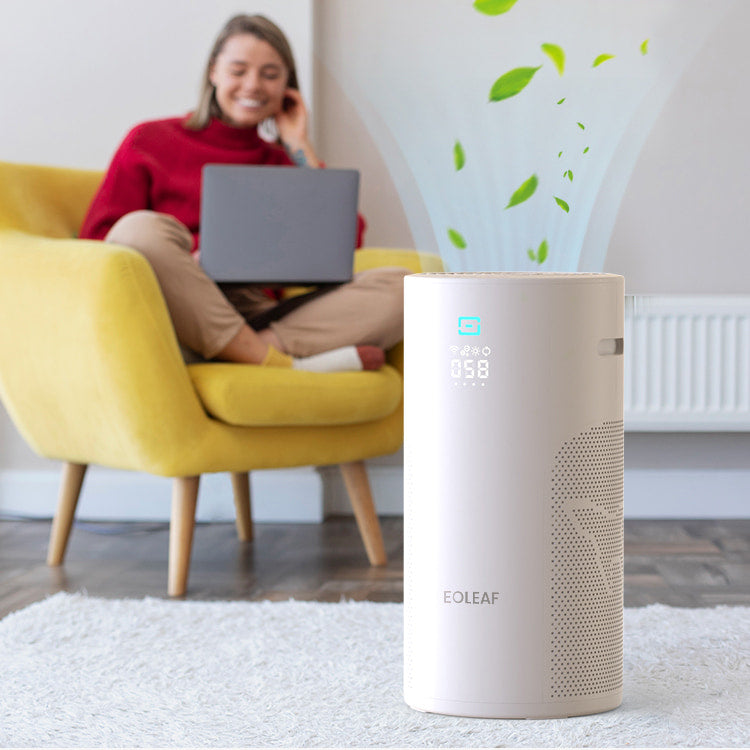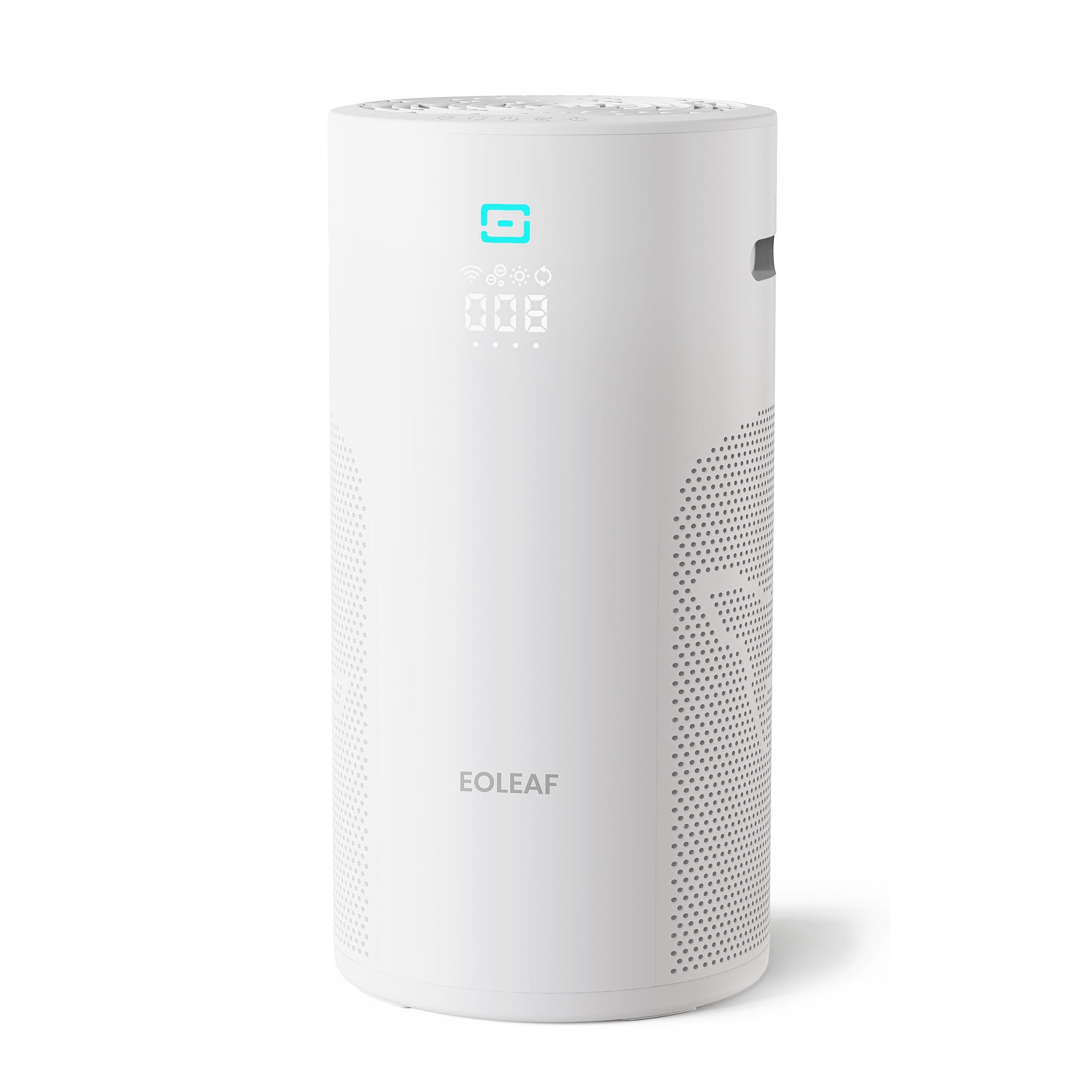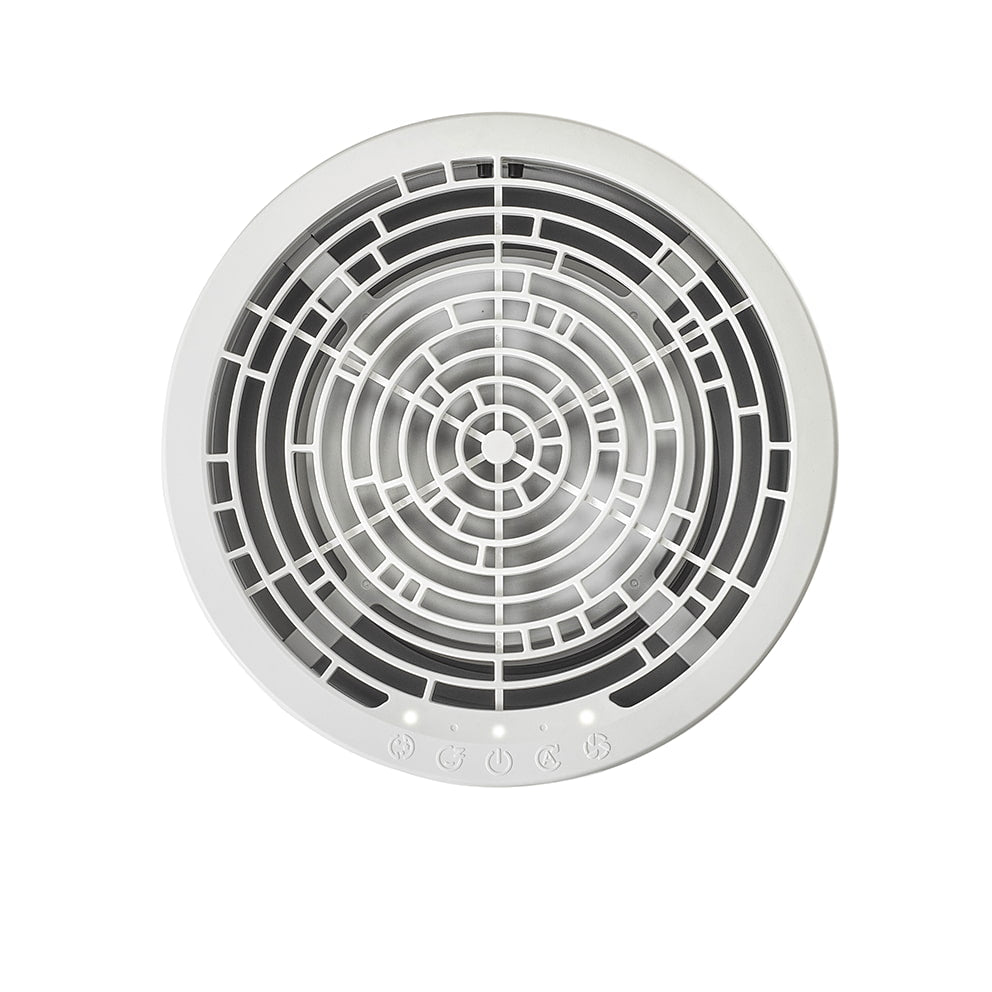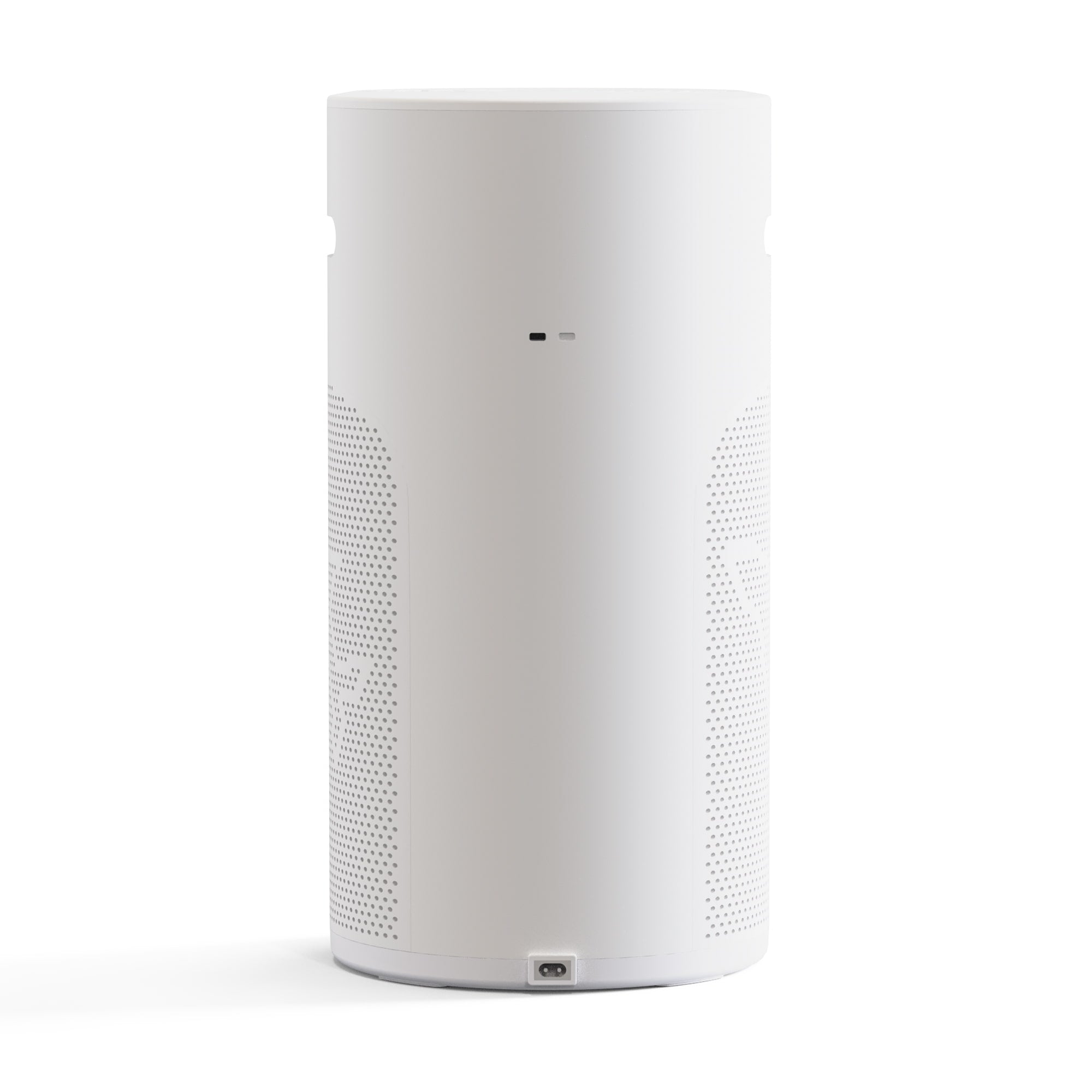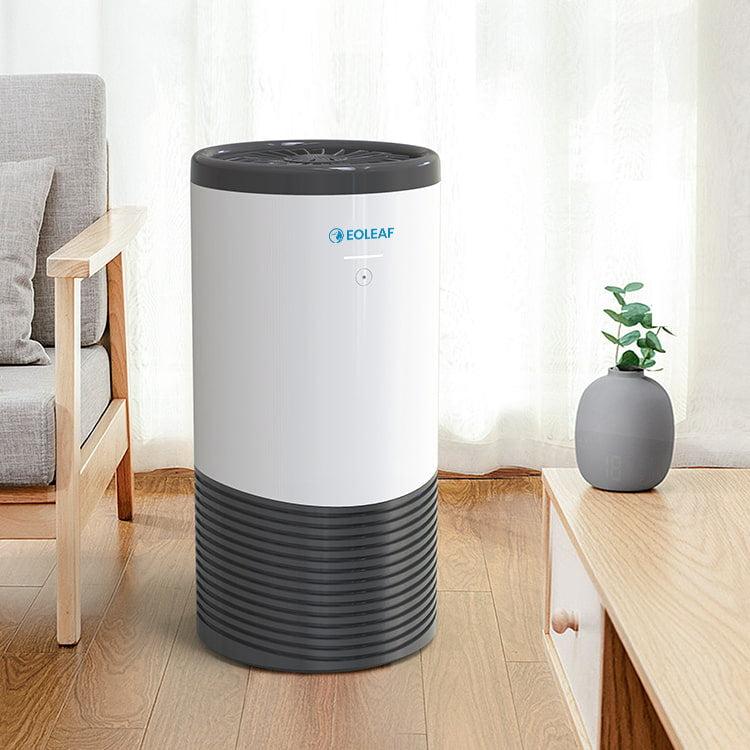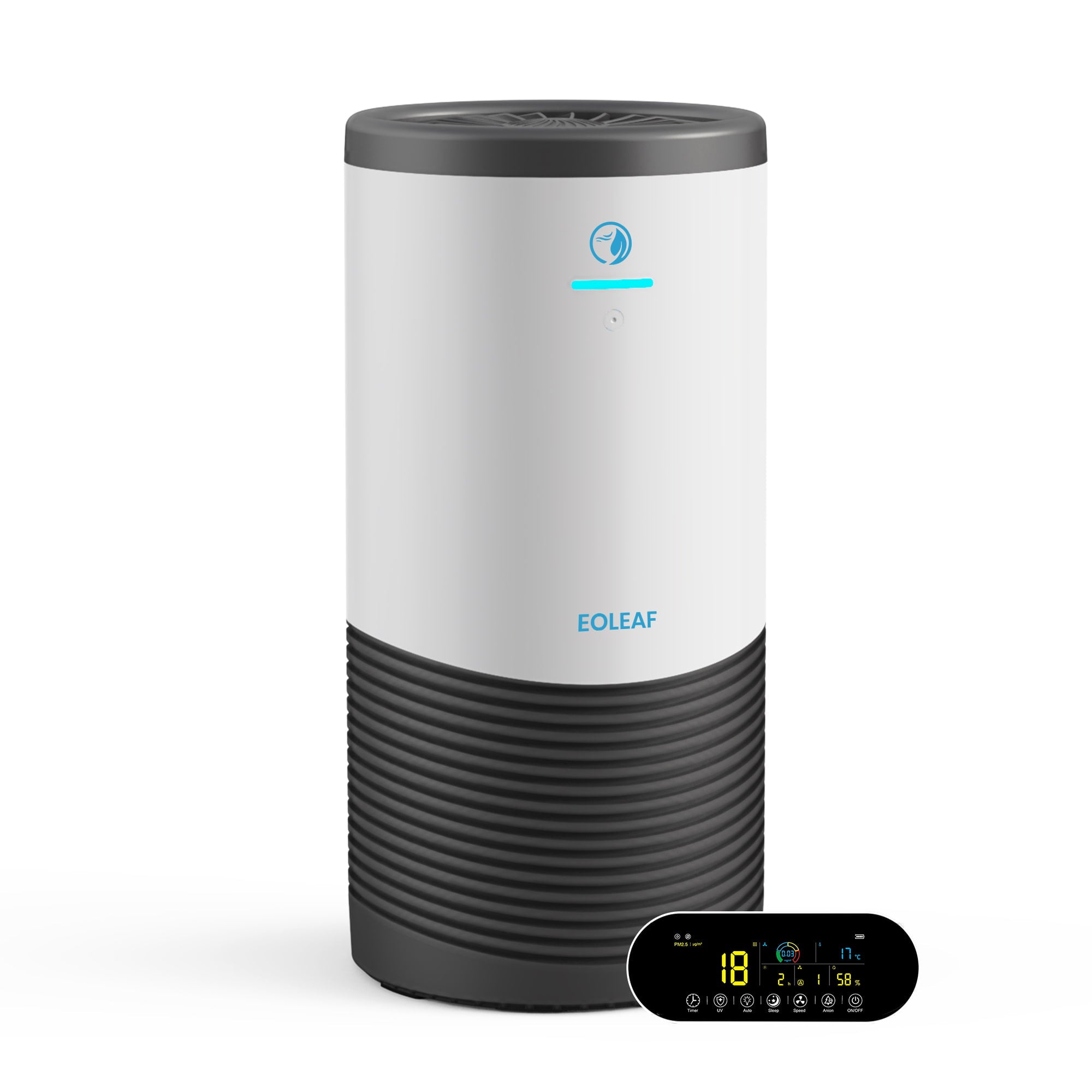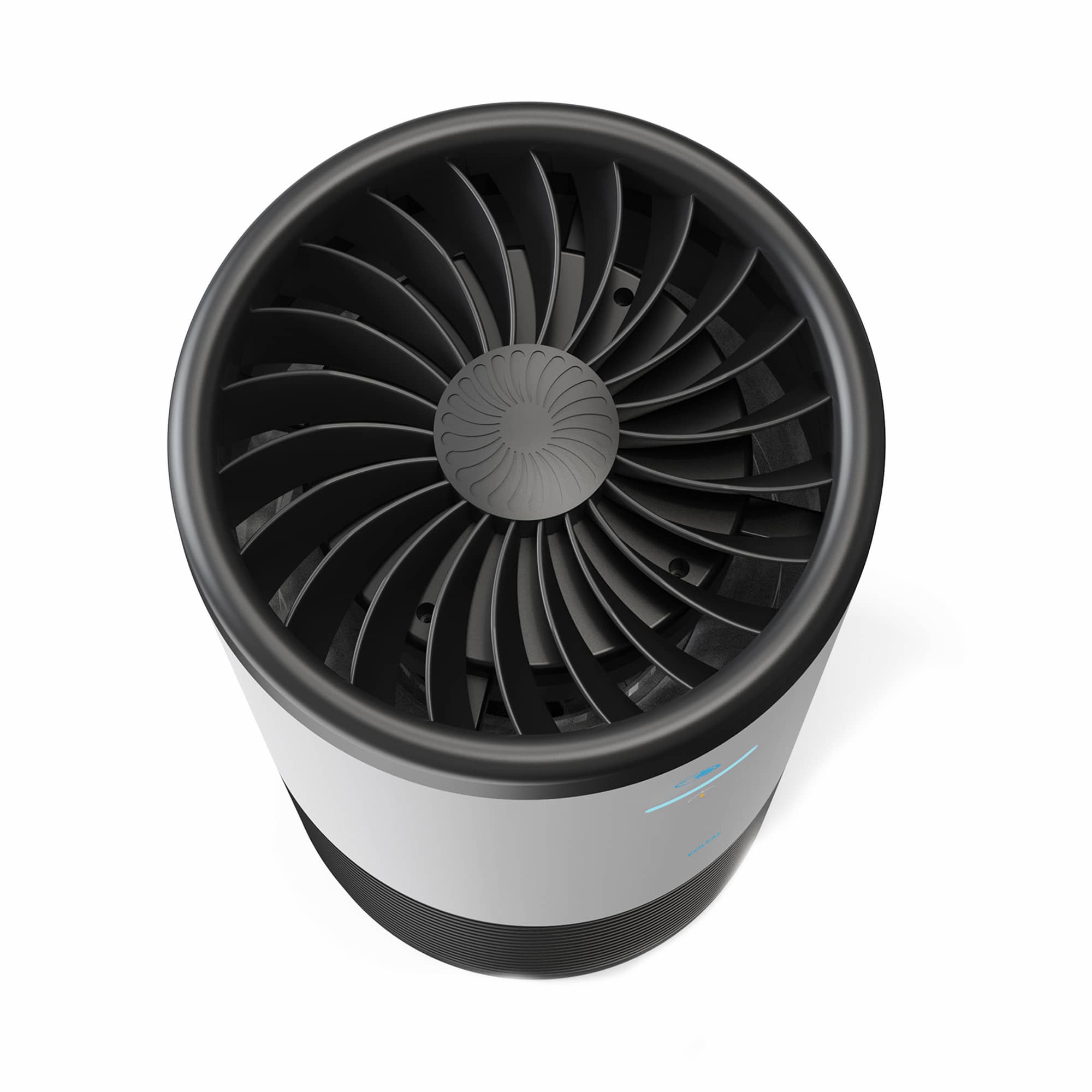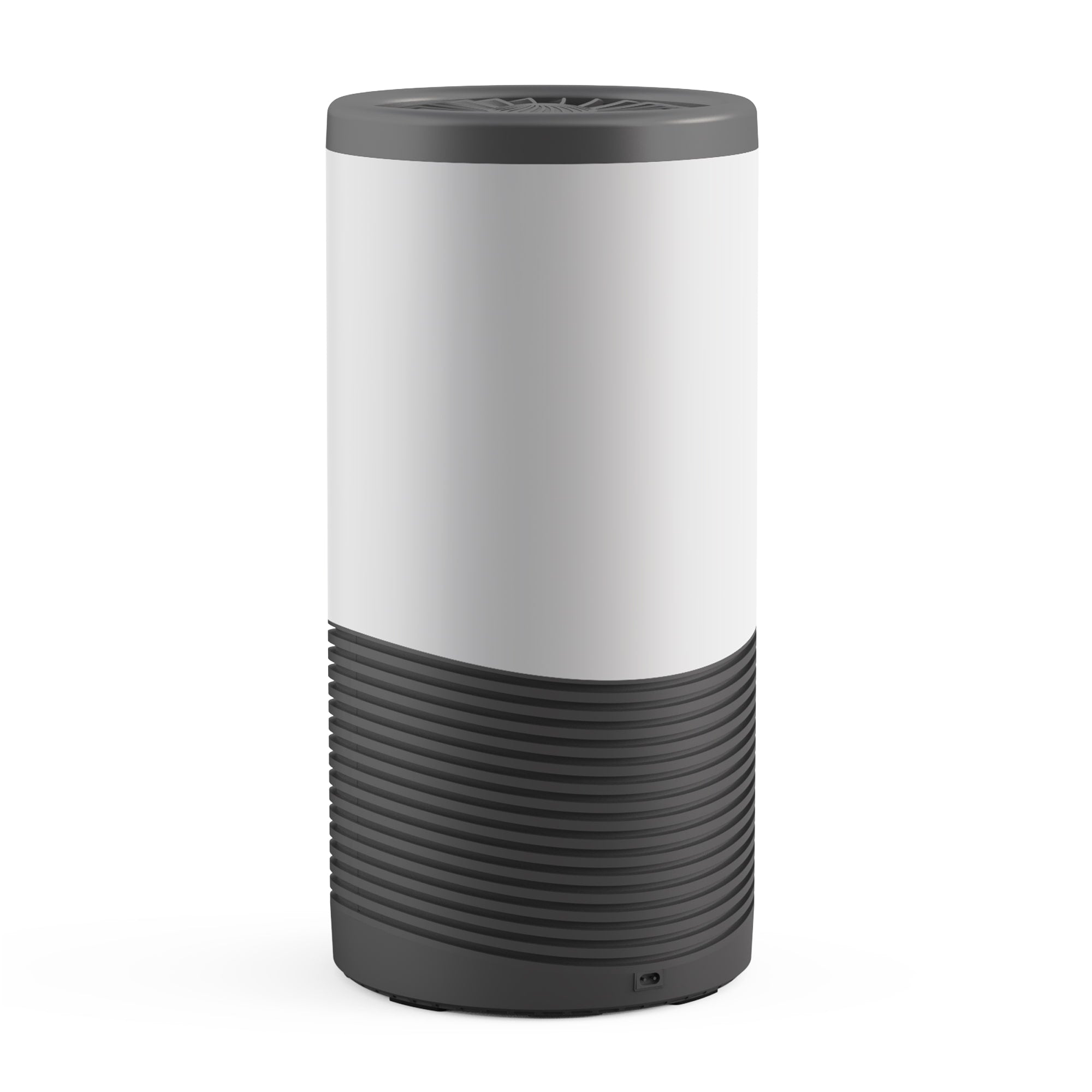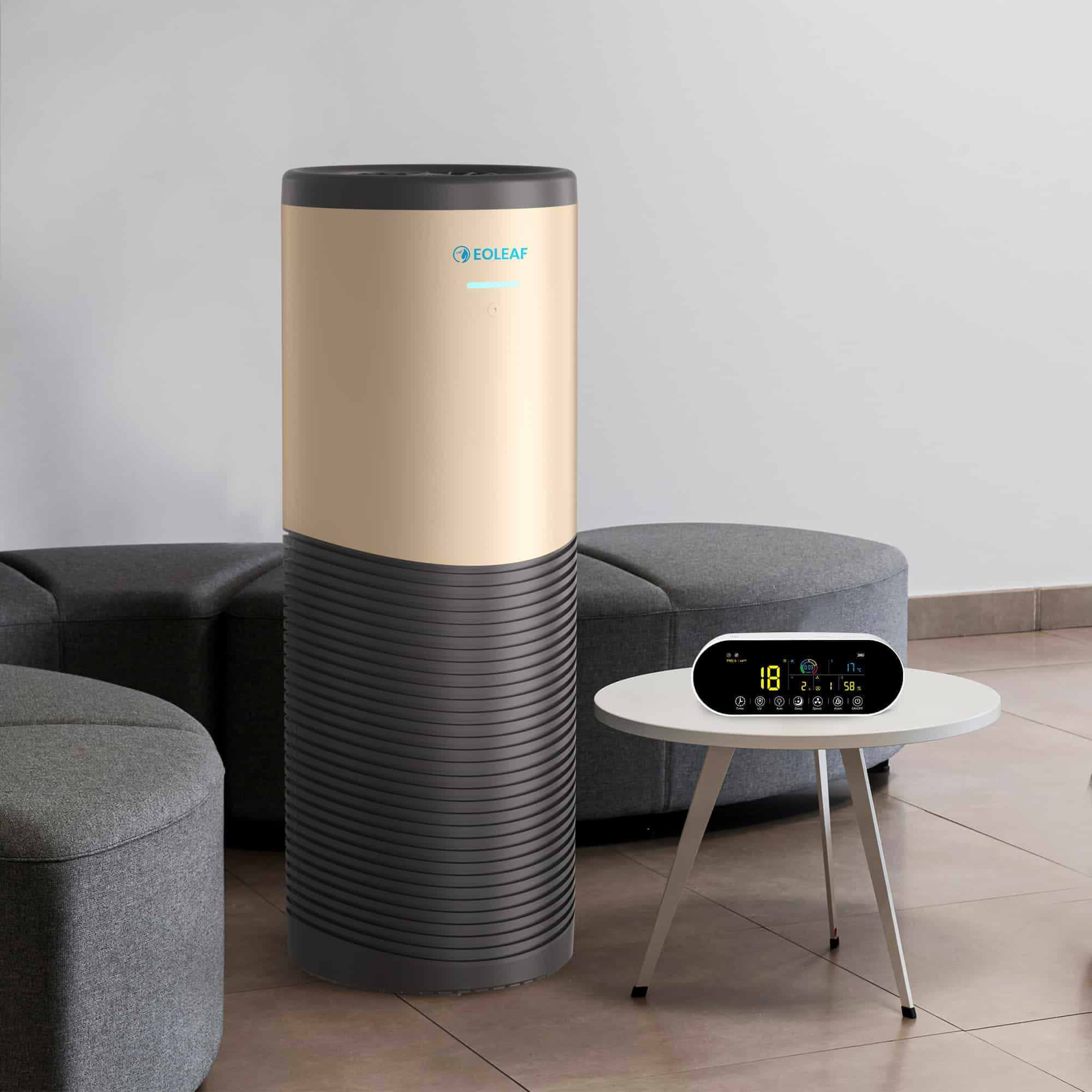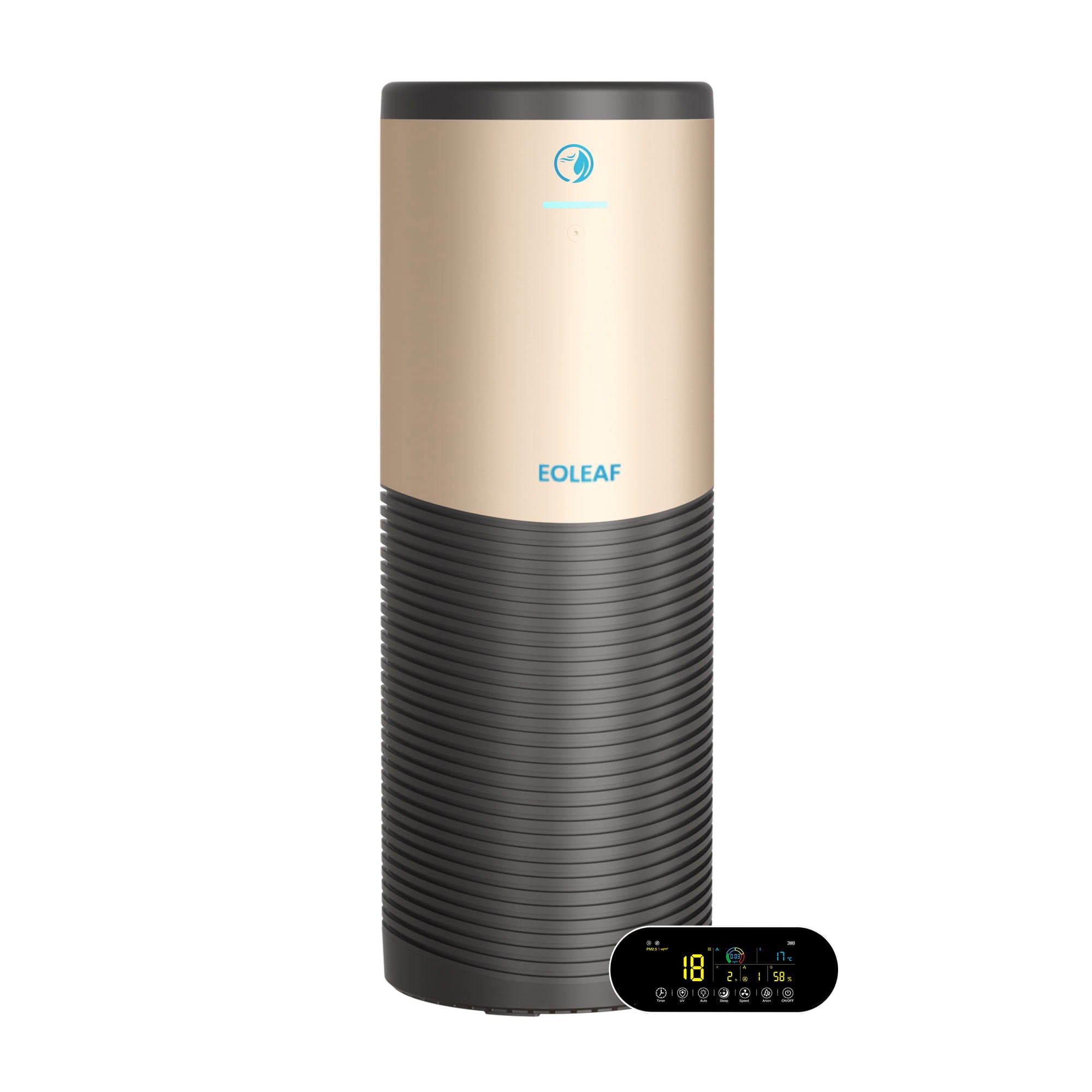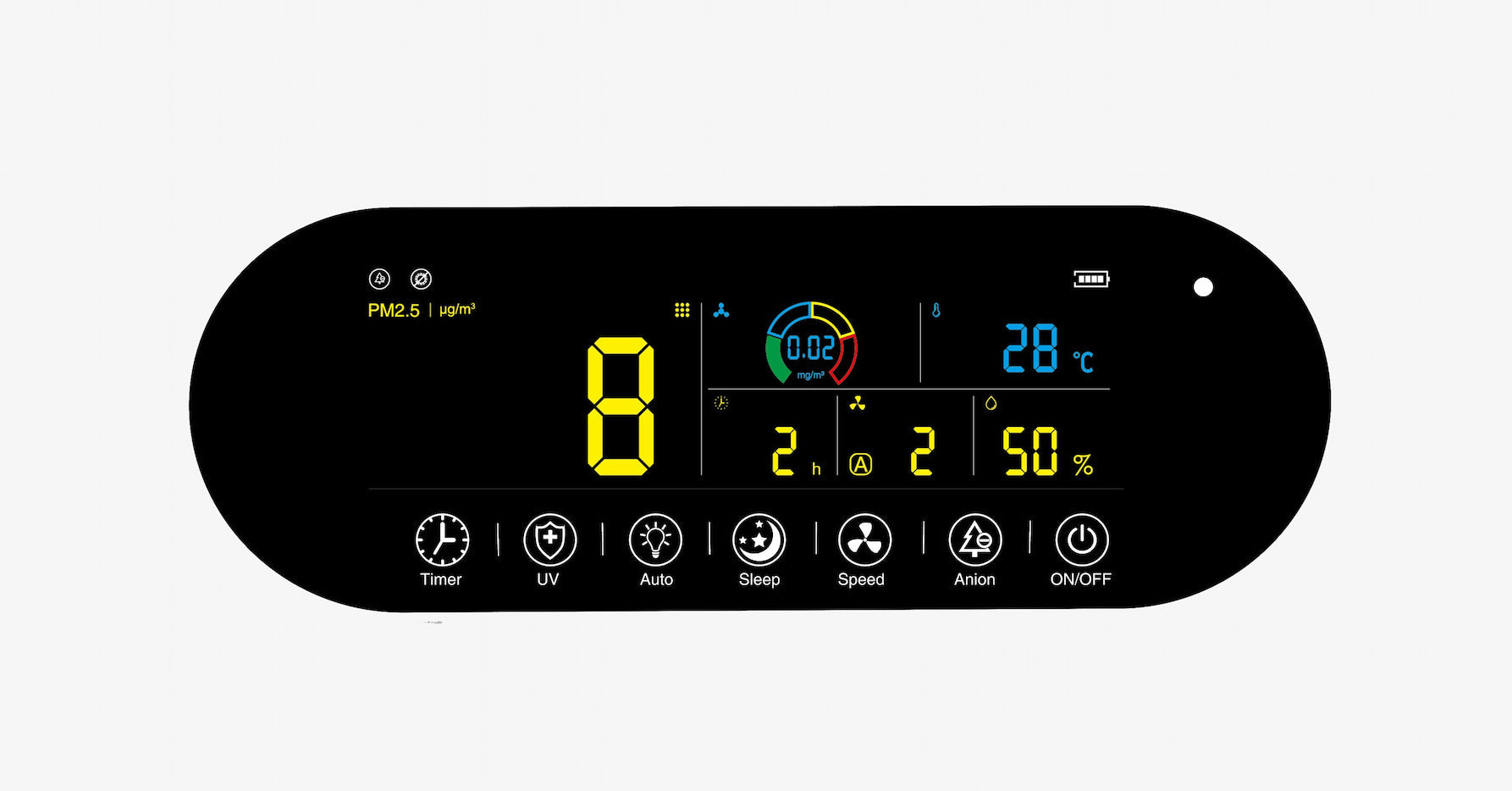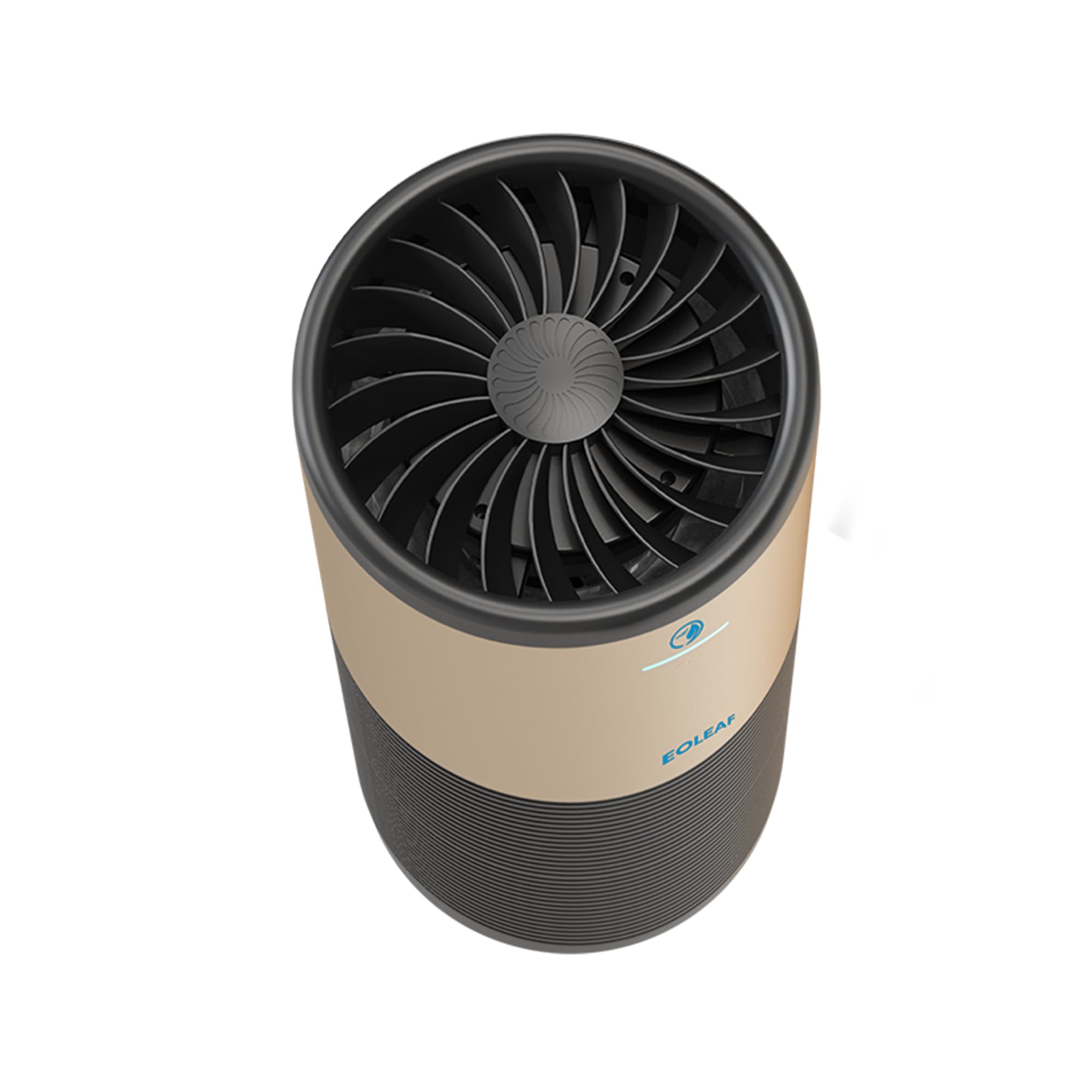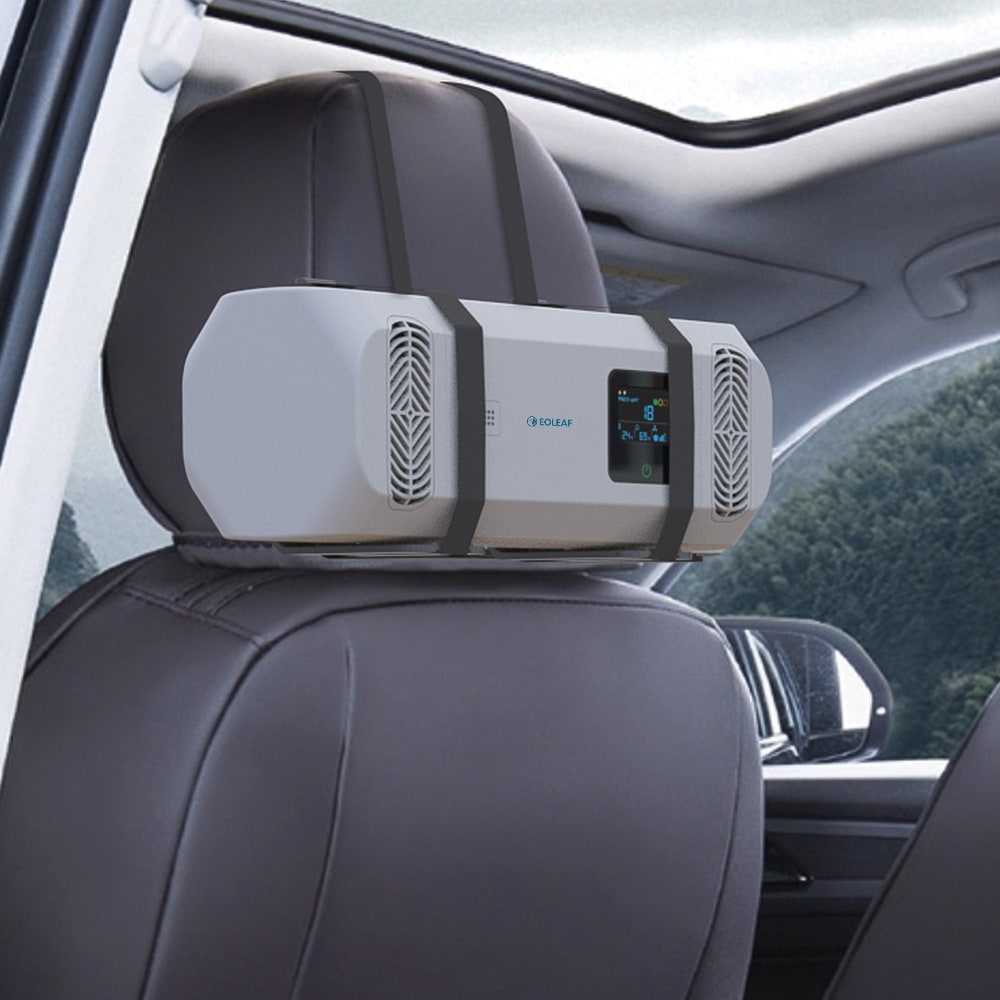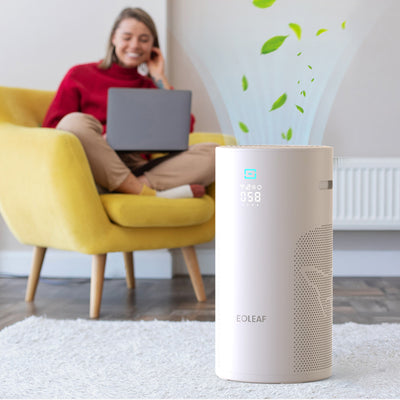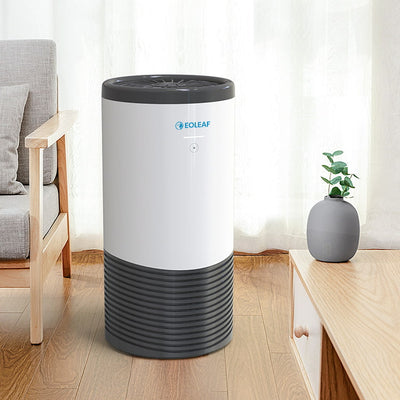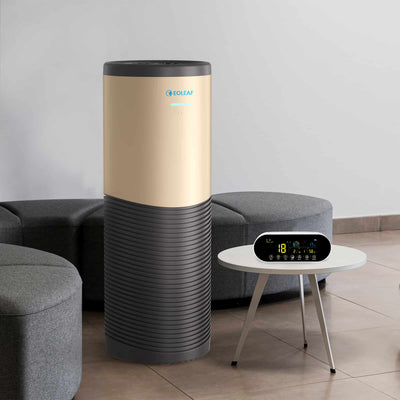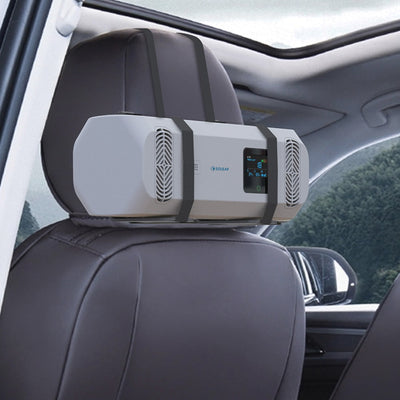Air quality in London: insights, solutions, and tips for cleaner air
Air quality in London has dramatically improved over the last century. The city of London has initiated metropolitan-wide, highly successful programmes that have contributed to a massive reduction in ambient air pollution throughout the city. However, London remains one of the world’s megacities, meaning that air pollution remains a significant concern. What are the main causes of poor air quality in London? What are the dangers it poses to our health? How can we protect ourselves? Read on to have these questions answered and more.
Understanding air quality in London
Fast facts on London air pollution
Did you know that…?
- In the UK alone, up to 43,000 people die prematurely per year as a result of air pollution exposure
- 1,737 schools are located in areas throughout the UK where nitrogen dioxide (NO2) and/or PM2.5 levels are double the limits set by the World Health Organisation (WHO)
- The effects of air pollution costs the UK £20 billion each year
- In 2010, there were approximately 5,900 premature deaths associated with NO2 exposure and 3,500 premature deaths associated with particulate matter exposure (PM2.5) in London1,3
London’s murky air quality history
As seen below, starting in the 1700s, London began to experience massive increases in air pollution with particulate matter concentrations doubling continuously before peaking at the very end of the 19th century.

Source 2
The increase in air pollution throughout the 18th and 19th centuries was mostly due to widespread coal burning and the rapidly-expanding coal industry throughout Great Britain. Increased demand for coal throughout Britain led to decreases in pricing for coal, contributing to an eight-fold increase in coal consumption from 1820 to 1900 (20 million tonnes to 160 million tonnes respectively). Throughout this time, coal was used for everything that required power, from industry to domestic heating. During the 1800s, the air pollution was so severe that it caused periods of fog that halted trains, interrupted economic activities, and caused crime rates to skyrocket. Furthermore, air pollution-related illness peaked: bronchitis was responsible for 350 deaths per 100,000 inhabitants by 1892 compared to just 25 per 100,000 inhabitants in 1840, a mere 50 years earlier2.

Source 2
At the start of the 20th century, air pollution levels started to decrease significantly. This was due to several factors including Great Britain’s shift away from heavy industry, focusing more on non-coal energy sources, environmental regulation, and a decrease in population density as the population began to spread into London suburbs. Additionally, London’s Public Health Act of 1891 began to fine businesses that emitted excessive smoke into the ambient air and that did not switch to cleaner forms of energy. The shift towards cleaner energy occurred for domestic use as well with a sharp rise in the use of gas appliances (from 2% of the population in 1892 to 69% in 1911)2.
By the 1950s, air pollution had started to reduce throughout the London metropolitan area. However, coal still remained in use in many homes and power stations. In 1952, the Great London Smog occurred which lasted for five days and claimed the lives of over 12,000 individuals. During the Great London Smog, daily sulphur dioxide (SO2) concentrations measured between 3,000 and 4,000 ug/m3 and fine particle pollution reached upwards of 4,460 ug/m3 3. To put this into perspective, the 2021 World Health Organisation (WHO) guidelines limits these daily concentrations to 15 ug/m3 for PM2.5, 45 ug/m3 for PM10, and 40 ug/m3 for SO2.
Present day: city initiatives to improve the air quality index
Air pollution in London continues to trend downwards as awareness of the dangers of poor air quality grows. Multiple programmes have been initiated throughout the London metropolitan area as part of an accelerated effort to curtail air pollution concentrations. London led the world’s first 24-hour Ultra Low Emission Zone (ULEZ) to which 95% of vehicles in London are now compliant. London also boasts the largest zero-emission bus fleet throughout Western Europe, as well as an extensive emissions-based licensing requirement for taxi drivers. Additionally, London has quadrupled its cycling network to over 360km in 2024 (up from 90km in 2016), making bike transport much more accessible to Londoners2. These are just a few of London’s accomplishments in regards to improving the air quality index throughout the city, but it does not stop there! The city of London has further plans to expand its green spaces and ban wood-burning stoves.
However, as one of the world’s largest cities, London still experiences air pollution generated by commercial, industrial, energy, manufacturing, and construction industries, as seen in the chart below.

Source 2
What is air quality and why does it matter?
With a population reaching almost 15 million, the London metropolitan area is the largest city in Western Europe4. Air pollution affects each and every one of us: this means that, in London alone, 15 million people are exposed to air pollution and its dangers on a daily basis and are subject to its negative health impacts.
The term ‘air quality’ is used to refer to the concentrations of air pollutants present in the air. When air quality is ‘poor’, there is a high concentration of harmful air pollutants; conversely, when air quality is ‘excellent’, concentrations of harmful air pollutants are low.
Air pollution is when there are contaminants in the air that could harm people, animals, and the environment. Over 7 million people worldwide lose their lives to air pollution each year, and countless more suffer from illnesses and disorders linked to air pollution, according to the WHO5. Some of the most dangerous air pollutants for human, animal, and environmental health include particulate matter (PM10, PM2.5, and PM0.1), carbon monoxide (CO), sulphur dioxide (SO2), nitrogen dioxide (NO2), nitrogen oxides (NOx), volatile organic compounds (VOCs), and ozone (O3). All of these pollutants have different sources. A brief breakdown of pollutants and their sources can be found in the infographic below:

Source 6
How is air quality measured in London?
In London, two types of air quality stations are typically used: automatic and non-automatic.
Automatic air quality measuring
Automatic air quality measurement methods involve taking measurements at 15-minute intervals through electronic recording and analysis. Specialist equipment is installed in a certain location at breathing height, draws in air, and then the data is analysed by the Imperial College London before being published for viewing by the public.
- Advantages: reliable results
- Disadvantages: less cost-effective because it requires regular equipment maintenance and specialised data analysis
Non-automatic air quality measuring
Non-automatic air quality measurement methods involve leaving a tube in a certain location for anywhere from 2 to 4 weeks, removing the tube, and sending it to a laboratory for analysis.
- Advantages: more cost effective, easier to use
- Disadvantages: only provide one value for the whole duration that it was in place, not providing the most accurate results; measurement processing takes time7
Multiple websites disseminate air quality information collected by air quality stations to the public in London:
- The London Assembly has published a map showing air pollution levels throughout the city: https://www.london.gov.uk/programmes-and-strategies/environment-and-climate-change/pollution-and-air-quality/london-air-quality-map
- London Air’s Pollution Map shows annual pollution means throughout the London metropolis: https://www.londonair.org.uk/london/asp/annualmaps.asp
Causes of air pollution in London
Major sources of air pollution
The single largest source of air pollution in London is road traffic. This includes emissions generated by diesel vehicles, public transport, private cars, taxis, and more. The volume of traffic throughout London as a whole makes it one the most heavily-polluted places throughout the UK.
Vehicles in London produce about half of all nitrogen oxides and also release incredibly fine particles of metal and rubber into our breathing air. Road traffic emissions lead to a slew of health conditions including lung disease, asthma, and cancer, all of which have become commonplace amongst Londoners. Road traffic emissions also contribute and aggravate asthma, which impacts 500,000 Londoners, and other respiratory symptoms, causing significant suffering and premature loss of life8.
Other sources of air pollution in London include residential wood-burning stoves, gas appliances, and industrial and construction activities.
Seasonal and geographic factors
Each season experiences different air quality issues. Winter typically experiences the worst pollution of the year which contributes to winter smog in many urban places, London included. This is due to the increased need for heating and transport, resulting in increased fuel and wood combustion. Cold air is also heavier than hot air and forces pollutants to stay close to the ground where they are easily inhaled.
Spring brings high pollen and other allergen concentrations. It is a notoriously difficult season for those suffering from pollen and/or other allergies. In summer, levels of fine particle pollution and ozone are particularly high.
Furthermore, anticyclonic conditions sometimes occur in late winter in southern Europe that send higher levels of PM10 and poor air quality to parts of northern Europe, London included. Sahara desert dust may also reach parts of London when there Sahara dust storms occur, making going outdoors unsafe for many sensitive individuals and risky for healthy individuals.
London City Hall has created a map showing average pollution levels throughout the city of London, a useful guide when venturing out into the city, as seen below:

Source 9
Impacts of air pollution
Health effects
Numerous illnesses and disorders, such as an elevated risk of hospitalisation, cancer, heart disease, respiratory conditions (such as asthma, COPD, pulmonary fibrosis, and pneumonia), and early mortality, can result from exposure to air pollution. Air pollution also contributes to a rise in the prevalence of allergies. Additionally, new research has demonstrated that air pollution might affect mental health by increasing the prevalence of anxiety, depression, and fatigue10. Pregnant women, the elderly, immunocompromised people, and babies and toddlers are the groups most at risk, although anyone who lives or works in an area with polluted air is susceptible to its risks (the WHO estimates that this group comprises 99% of the world's population).
According to a recent study, the lowering of cancer rates in cities with high levels of air pollution would be just as important as the elimination of smoking. The same cancers linked to smoking, such as lung, stomach, kidney, cervical, bladder, pancreatic, liver, oral, colon, oesophageal, laryngeal cancer, and acute myeloid leukaemia, would decrease if air pollution levels in these cities were reduced. According to medical professionals, the benefits of quitting smoking in an area with high levels of air pollution can be negligible11.
When discussing the severity of the air pollution issue in London, Dr Gary Fuller, one of the UK’s three Clean Air Champions, stated, ‘We know that air pollution is shortening people’s lives. What does that look like? Well, it’s about 4,000 early deaths per year in London. It’s about 40,000 in the UK and it’s about 400,000 – from particle pollution – across Europe. And globally, certainly from outdoor air pollution, you’re looking at about four million. And that’s really just the tip of the iceberg.’
Environmental consequences
Air pollution impacts nearly all aspects of the environment. It destroys crops and plants. It produces acid rain. It renders once liveable environments for animals inhospitable. It contributes to global warming and climate change. London, and the UK in general, prides itself on urban greenery and havens for biodiversity, all of which is heavily impacted as a result of air pollution exposure.
In places like London, it degrades organic polymers found on built structures, and diesel emissions destroy finer detailing found on historical monuments.

Solutions for better air quality
Purchase an Eoleaf air purifier
Unfortunately, we frequently have no control over the quality of the air outside. Our health continues to deteriorate because 99 percent of people on the planet breathe air that is higher above the WHO's ACQ. With an Eoleaf air purifier, you can regain control over your home and work environments. Our devices shield your health from the risks of air pollution by utilising some of the most cutting-edge technologies available. To collect particles as small as 0.01 μm, our air purifiers use a cutting-edge multi-layer filtration technology. All forms of pollution are filtered, including allergens (pet dander, pollen), smoke (cigarette, cooking), germs (airborne bacteria and viruses), chemical pollution (ozone, VOCs, NO2, etc.), and fine particle pollution. Our devices are also extremely energy efficient, keeping energy consumption and costs low, and the stylish designs of our products blend into the background of any indoor environment.
Explore our range of air purifiers designed for London’s air quality challenges here.
Stick to the least-polluted areas in London
Certain areas in London have clean air, making them ideal for living or for outdoor activities. These include:
- Richmond - an area with low PM2.5 levels and green buffers
- Greenwich Peninsula - the first Low Emission Zone established in 2004
- Kingston-upon-Thames - offers multiple parks and river access13
Create a cleaner indoor environment
There are some steps you can follow in order to improve the quality of your indoor air and protect your health. Remember: indoor air is 2 to 5 times more polluted than outdoor air and contains more types of pollutants than you find outdoors!
- Invest in a high-performance, HEPA-certified air purifier (like Eoleaf’s!) that combat all types of indoor air pollution including fine particle pollution, chemical pollution (like VOCs), and biological pollution
- Ventilate often to prevent stagnant air from forming (avoid this during periods of high ambient pollution)
- Favour low- or no-VOC cleaning and DIY products and avoid fragrances and air fresheners
- Keep houseplants in your home and/or workplace - plants naturally filter certain pollutants from the air, and some are more effective at doing so than others!
What you can do to protect yourself
Education is key: keep a regular eye on your local pollution levels and act accordingly! Stay updated by following real-time AQI apps and services. Protect yourself from the dangers of air pollution by reducing your time spent outdoors during periods of high pollution. Wear a face mask if you do need to go out during these periods, try to do so in the morning or after it’s rained, and take a shower once you return home. Install an air quality monitor in your home to track indoor and outdoor air quality where you live and work. Refer to our list of suggestions for protecting yourself from air pollution’s dangers here.
Eoleaf air purifiers: the perfect device for protecting your health from London’s air pollution
Sometimes it seems like you have no control over air pollution or quality, no matter how hard you try. You still have control over the quality of the air indoors, even though that may be the case for pollution outside. Think about investing in a top-notch air purifier. Eight distinct filtration methods found in Eoleaf's air purifiers remove all three forms of indoor pollution: particle, chemical, and biological contaminants. Smoke, soot, pollen, dust, dander, carbon monoxide (CO), volatile organic compounds (VOCs), nitrogen oxides (NOx), sulphur dioxide (SO2), pesticides, and microorganisms (bacteria, viruses, and toxins) may all be effectively removed from your air by our equipment. With the help of our equipment, you may breathe freely and regain control over the air you breathe.
We even have a model for cars to protect you during your road journeys! Read more about the benefits of installing an air purifier in your car and find more information on our PURE CAR model here.

Frequently asked questions
What is PM2.5, and why is it dangerous?
Because PM2.5 is linked to detrimental impacts on human health, it is the most notorious form of particle matter. Emissions of these particles, which have a diameter of 2.5 μm or less, are largely caused by burning fuels (wood, oil, diesel, and petroleum are some of the worst), but they can also contaminate the air we breathe from natural sources like wildfires. Because of their small size, PM2.5 particles can enter the body through the respiratory system and travel quickly and readily to other regions of the body, including the heart, brain, and bloodstream. This makes them very harmful.
How does air quality vary across London?
Certain areas of London, particularly those that are surrounded by parks or near the Thames, benefit from better air quality overall. These are areas like Richmond, Kingston-upon-Thames, and Greenwich Peninsula. Other, more industrialised and trafficked areas of London have notoriously bad air quality, especially the City of London.
What are the best ways to monitor air quality?
If you are monitoring your air quality at home or at work, it is recommended to invest in an air quality monitor. You can also track outdoor air quality by referring to websites like AccuWeather or the London City Hall websites. Stay up to date on the state of your air quality to avoid the dangers of air pollution.
Are air purifiers worth it in London?
Absolutely. Air purifiers are highly recommended in urban environments, especially in megacities like London. Indoor air is 2 to 5 times more polluted than outdoor air, so it is essential to protect your health from its dangers with a high-end air purifier. Make sure that you purchase one that is certified HEPA and contains multiple technologies in order to combat all types of air pollution (Eoleaf devices contain 8!).
Resources
1 Air pollution. Friends of the Earth. (n.d.). https://friendsoftheearth.uk/climate/air-pollution?utm_source=google&utm_medium=cpc&utm_campaign=climate-change&utm_content=FY202324-11_generic&source=FN0000AWR&gad_source=1&gclid=Cj0KCQiA4fi7BhC5ARIsAEV1YibgPEXdB5MG2CEdu5BeZUdwTweluHF-fXbInz0B4imOncdtAmiFTpQaAl7AEALw_wcB
2 Ritchie, H. (2017, June 20). What the history of London’s air pollution can tell us about the future of today’s growing megacities. Our World in Data. https://ourworldindata.org/london-air-pollution
3 70 years since the Great London Smog. London City Hall. (2022, December 5). https://www.london.gov.uk/programmes-strategies/environment-and-climate-change/environment-and-climate-change-publications/70-years-great-london-smog
4 Major agglomerations of the world - statistics and charts in maps, diagrams and tables. Major Agglomerations of the World - Population Statistics and Maps. (n.d.). https://www.citypopulation.de/en/world/agglomerations/
5 World Health Organization. (2022, December 19). Ambient (outdoor) Air Pollution. World Health Organization. Retrieved April 11, 2023, from https://www.who.int/news-room/fact-sheets/detail/ambient-(outdoor)-air-quality-and-health
6 Air Pollution. (n.d.). https://www.eurizoncapital.com/en/sustainability/esg-insights/air-pollution
7 How is air quality measured?. London Air Quality Network. (n.d.). https://www.londonair.org.uk/LondonAir/Default.aspx
8 Air quality: clearing London’s air. Transport for London. (n.d.). https://tfl.gov.uk/corporate/about-tfl/air-quality#:~:text=Road%20vehicles%20are%20the%20single,into%20the%20air%20we%20breathe
9 London Air Quality Map. Greater London Authority. (2024). https://www.london.gov.uk/programmes-and-strategies/environment-and-climate-change/pollution-and-air-quality/london-air-quality-map
10 Armstrong-Carter, E., Fuligni, A. J., Wu, X., Gonzales, N., & Telzer, E. H. (2022). A 28-day, 2-year study reveals that adolescents are more fatigued and distressed on days with Greater No2 and Co Air Pollution. Scientific Reports, 12(1). https://www.nature.com/articles/s41598-022-20602-z
11 Marusic, K. (2023, February 3). In polluted cities, reducing air pollution could lower cancer rates as much as eliminating smoking would. Environmental Health News. Retrieved February 22, 2023, from https://www.ehn.org/air-pollution-cancer-2659365270.html
12 Day, P. (2024, December 4). The big interview: Dr Gary Fuller. Air Quality News. https://airqualitynews.com/headlines/the-big-interview-dr-gary-fuller/
13 London’s cleanest and most toxic air zones. EMSOL. (2023, December 18). https://emsol.io/londons-cleanest-and-most-toxic-air-zones/

